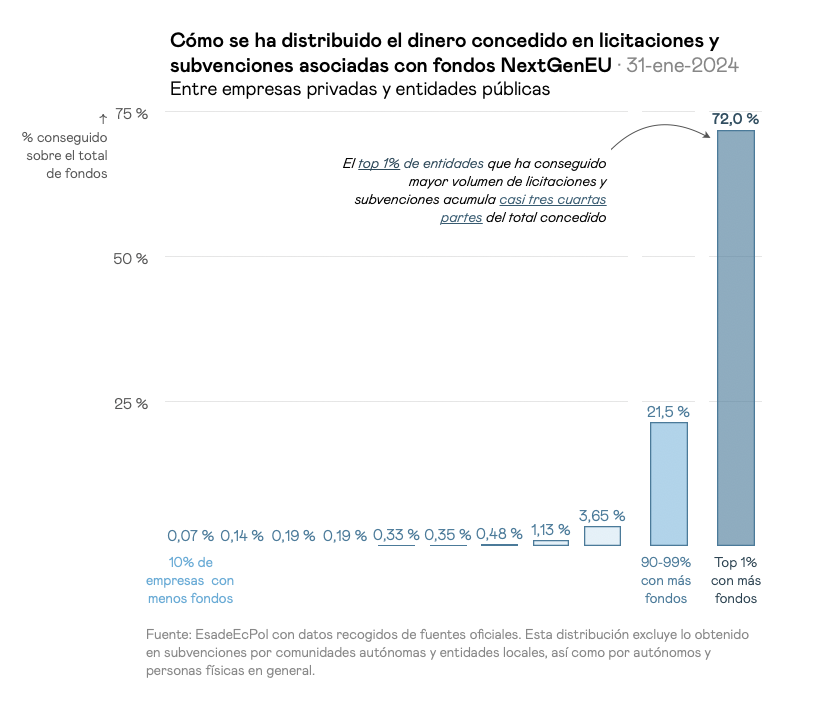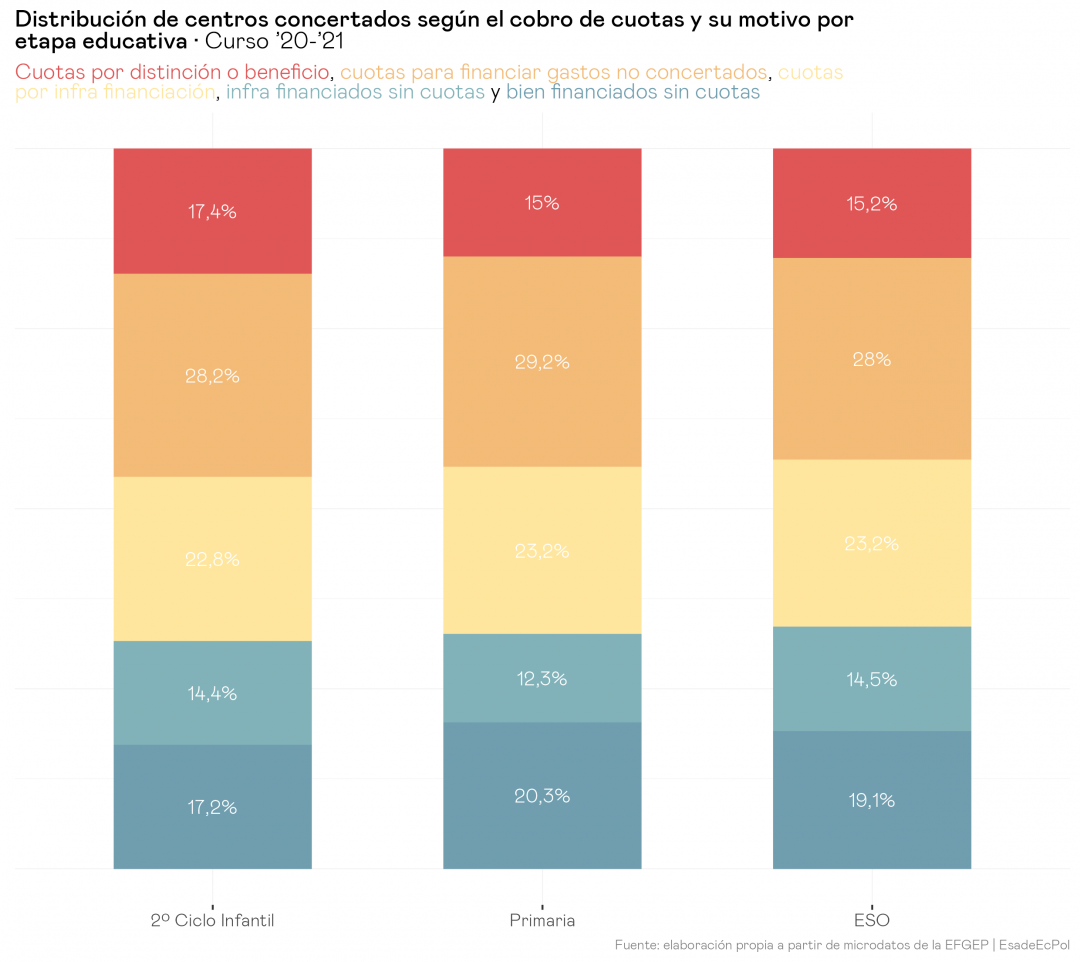
Analyzing in detail the destination and pace at which the €80 billion that Spain has been allocated to date under the Next Generation EU Funds program remains a major challenge, even considering the mid-term assessment recently published by the European Commission on plan’s progress.
The first and principal reason is that, unfortunately, there is no centralized source of information that compiles and displays all the calls for proposals and associated implementations by the authorities themselves.
To solve this lack of transparency at least partially, we use a scraping system and algorithms to collect in real time all calls for tenders (“licitaciones”) and subsidies (“subvenciones”), as well as the concessions of both.
These data collected from official public sources are subjected to a demanding process of filtering, cleaning, elimination of duplicates to avoid double-counting that normally plagues this type of monitoring, and allocation of additional information by cross-referencing official databases to complete the analysis.
With this information we can observe the progress of the NextGenEU Funds at the closest possible point to their impact on the real economy. This phase does not correspond to the effective arrival of the money to the winning entities of these concessions, since this information is not public, although the previous phase is.
- From 2021 to the end of January 2024, our data indicate that of the €80 billion allocated, €56.3 billion have been issued (70%) and €32.9 billion granted (41%).
- 72% of the concessions to companies (excluding the freelancers, individuals, etc.) are concentrated in the top 1% of recipients: some 1,540 companies.
- By autonomous communities, the Valencian Community and Andalusia lead in terms of amount, with more than €1.2 billion each. Catalonia, the Community of Madrid and the Basque Country also have significant figures, exceeding €800M.
- However, if we look per capita, the Basque Country, Castilla – La Mancha, Aragón, Castilla y León and La Rioja top the list (all above 300€ per capita) as opposed to Catalonia, Madrid (130€ per capita) or Navarra (90€ per capita).
- By sector, of the €16 billion awarded for grants and tenders that have a specific sectoral affiliation (there is no data for the rest), more than €4 billion (25%) was dedicated to construction.
If this pace is evaluated strictly from a temporal point of view, we assess that in order to meet the deadlines, it should accelerate significantly. In comparative terms, it is clear that there are considerable differences between territories and sectors.
However, another way of assessing these results is that the execution of the funds has adapted to the pre-existing structure, following a similar rhythm to what we could have anticipated beforehand, taking the paths of least resistance: the entities and authorities with greater experience and internal capacity built up, linked to the most articulated components of the plan (PERTEs, VEC or microchips, the Kit Digital or energy agencies, for example) are those that have been able to respond more quickly to the high demands of objectives and execution set out in the original European Plan.


